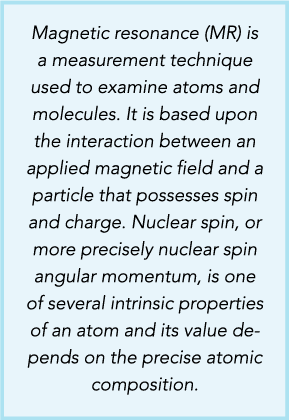| A Message from the SMRT Online Learning Committee about the Home Study Educational Seminars | ||||||
|
||||||
|
Vol.20 #7: Fundamentals of Magnetic Resonance We are pleased to present the SMRT Educational Seminars, Volume 20, Number 7: "Fundamentals of Magnetic Resonance." This is the 83rd accredited home study developed by the SMRT, exclusively for SMRT members. The accreditation is conducted by the SMRT acting as a RCEEM (Recognized Continuing Education Evaluation Mechanism) for the ARRT. Category A credits are assigned to each home study, which can be used to maintain one’s ARRT advanced registry. SMRT Home Studies are also approved for AIR (Australian Institute of Radiography), NZIMRT (New Zealand Institute of Radiation Technology) and CPD Now (The College of Radiographers, United Kingdom) continuing professional development (CPD) activities.
Three previously published book chapters on MR physics and principles have been selected for this issue. These, the most fundamental elements that we use every day in MRI, guarantee our understanding and successful utilization of more advanced techniques. In the first chapter, the authors offer the introduction "Magnetic fields are produced by and surround electric currents, whether these currents are macroscopic currents such as those running through wires or microscopic currents such as those around an atom of iron." Providing a detailed description of the production of net magnetization from nuclear spin to the Larmor precession and magnetic susceptibility adequately prepares us for the second chapter. As the authors continue "In its most basic form, the MR experiment can be analyzed in terms of energy transfer." In this chapter, radiofrequency excitation and signal detection are reviewed including the chemical shift that occurs between water and fat. In chapter 3, the authors describe with great clarity T1 relaxation and saturation, T2 and T2* relaxation, and spin echoes. A special thank you to Kimberly Carr, BBA, CNMT(R)(MR), from Fremont, Michigan, USA for acting as the Expert Reviewer for Volume 20, Number 7. Thanks also to Heidi Berns, M.S., R.T.(R)(MR), FSMRT, Chair of the SMRT RCEEM Ad-hoc committee from Coralville, Iowa, USA and all those who participate on this committee by reviewing the home studies for accreditation. Finally, many thanks to Kerry Crockett, Associate Executive Director, Mary Keydash, Director of Marketing, Sally Moran, Director of IT and Web, Barbara Elliott, SMRT Coordinator, John Celio, IT Coordinator, and the entire staff in the Concord, California, USA office of the ISMRM and SMRT for their insight and long hours spent supporting these educational symposia. Click here to access the new Educational Seminar
|
||||||
| Click to go back | ||||||
Signals is a publication produced by the International Society for Magnetic Resonance in Medicine for the benefit of the SMRT membership and those individuals and organizations that support the educational programs and professional advancement of the SMRT and its members. The newsletter is the compilation of editor, Julie Strandt-Peay, BSM, RT (R)(MR) FSMRT, the leadership of the SMRT and the staff in the ISMRM Central Office with contributions from members and invited participants.
|



